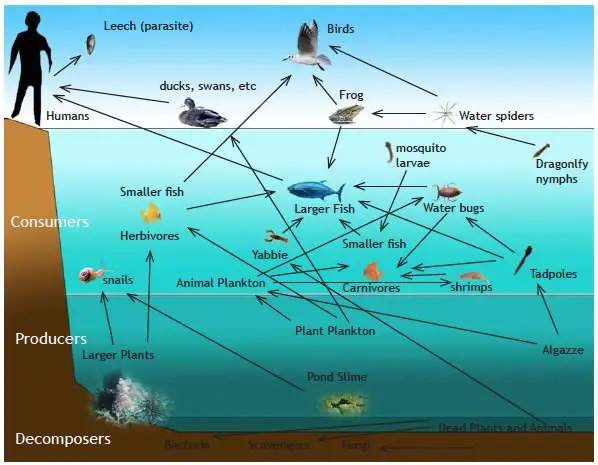The Food Web
The food chains, as a matter of fact, do not occur in isolation. Since many animals eat more than one kind of food, different kinds of food chains exist in an ecosystem. This network of interconnected food chains is called ‘food web’.
- Food web, therefore, may be defined as the network of a number of food chains existing within an ecosystem.
- In other words, the food web is the natural interconnection of food chains and a graphical representation of what-eats-what in an ecological community (Wikipedia).
Unlike a food chainOpens in new window, food web has several alternative pathways for the flow of energy. In the food web shown in Figure X-1 there are several food chains operating in a food web.
 Source: Global System ScienceOpens in new window
Source: Global System ScienceOpens in new window
|
The food web starts from the plants which are producers and ends with the top carnivore.
Characteristics of a Food Web
A food web has following characteristics:
- In a food web, no food chain is independent and no linear arrangement of food chains occurs.
- It is formed by the interlinking of three types of food chains: predatory chains, parasitic chains and saprophytic chains.
- Food web provides alternative pathways of food availability, i.e., if a particular crop fails, the herbivores graze on other type of crop. Thus, greater the number of alternate pathways, more stable the ecosystem.
- Food web helps in checking the overpopulation of highly fecundive species of animals and plants.
- The position of an animal in a food web is determined by the age and size of the species and availability of food source.
- A food web operates according to taste and food preferences of the organisms at each trophic level. Availability of food source is also very important, e.g. in Sunderbans, in the absence of its natural prey, tiger eats fish and crabs.
You might also study:

